Dark Souls: The Board Game has two excellent new Core Sets
It’s been almost six years since we reviewed Dark Souls: The Board Game and a lot has changed. Hobby board games have changed massively in that time, and so too have our expectations as gamers. Thankfully, the tools and mechanisms available to designers have also expanded, and I have recently been delighted to revisit two new Dark Souls: The Board Game core sets that tweak the original formula — Tomb of Giants and The Painted World of Ariamis.
In a while, I’ll cover the specifics of each game in turn, but before I do that I thought it might be worth just mentioning that Dark Souls: The Board Game has changed a bit since the original release. For starters, there are the player boards — which have arguably been “downgraded” from using slotted cubes to featuring stat, health and fatigue tokens that slot back into the boards they are punched from. We don’t like this feature because it’s incredibly fiddly, but there’s good news because that’s the only thing we don’t like!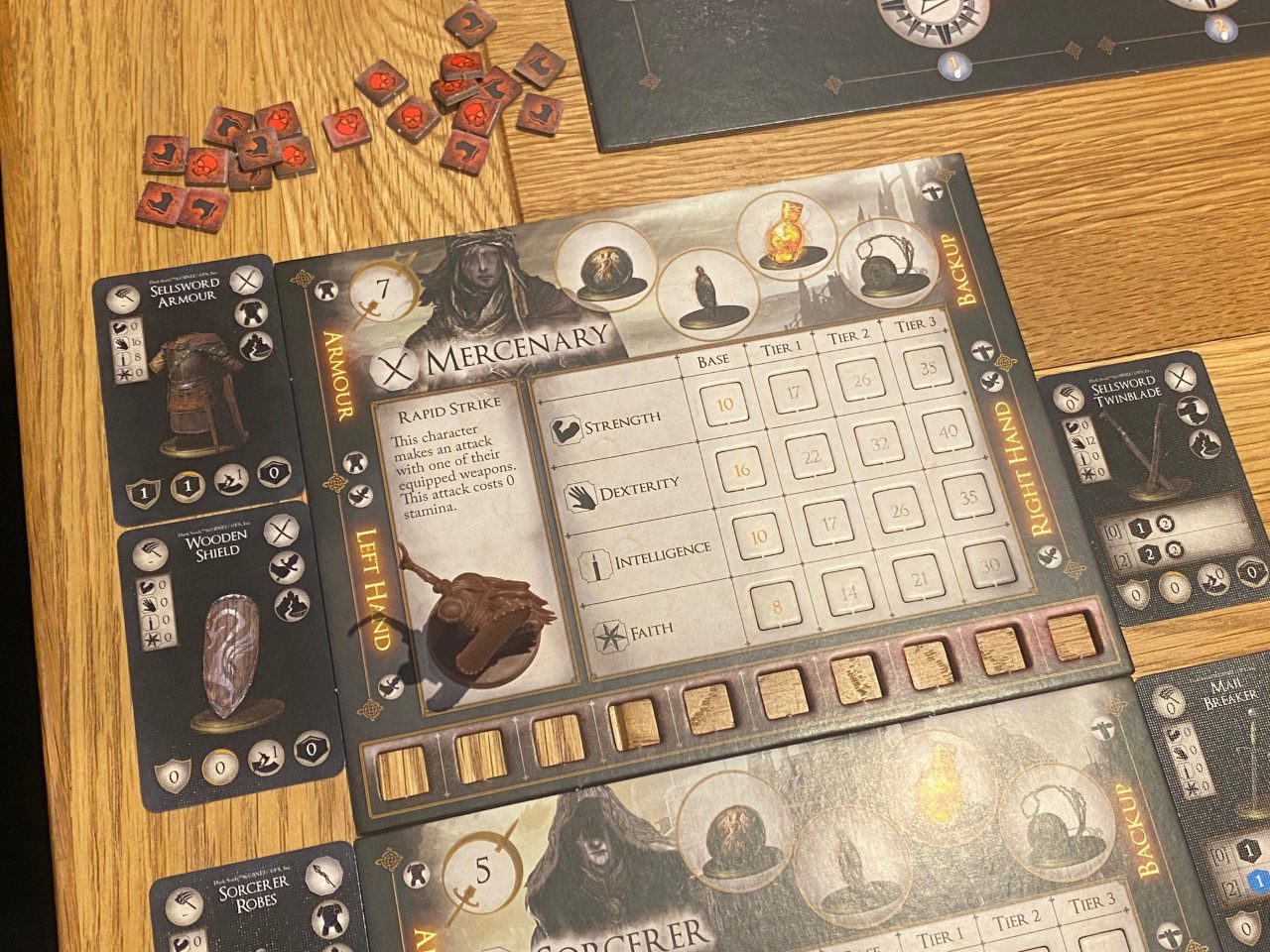
More materially, and certainly for the better, is the introduction of a completely new campaign system which changes how the game plays quite a bit. There’s now a new Campaign Dashboard that will dictate the flow of your game. This is used to provide the bonfire, track your party’s Ember tokens and show a sort of map that will take you through numerous randomised encounters (which appear on individual cards). Each of the two core sets includes a single boss and sub-boss encounter, and these will both appear in specific places on the Campaign Dashboard.

This system replaces the previous, fairly traditional approach of setting up an entire level and working your way through it in much the same way as you would many other dungeon crawlers. I am a big fan of the new system for several reasons — firstly because it just feels a lot more reminiscent of the actual videogame, but also because it makes the game easier to set up and get into, easier to teach, more manageable on the table and arguably more fun. There’s progression between the encounter cards which go from easy through to hard, and offer options for replaying if you need to “farm some souls” and power up your character a little.
Encounters also offer a lot of variability and increase the overall replay value of the game — some of them simply demand that all enemies are killed, but others have special rules and objectives that change things up. Defeating all enemies within a set number of turns might yield a certain bonus item, or perhaps instead of simply fighting enemies, you’ll have to place a torch onto a certain space to represent one of the many in-game puzzles. There’s nothing ground-breaking here, but what has changed feels like good, sensible stuff that improves the game quite a bit.
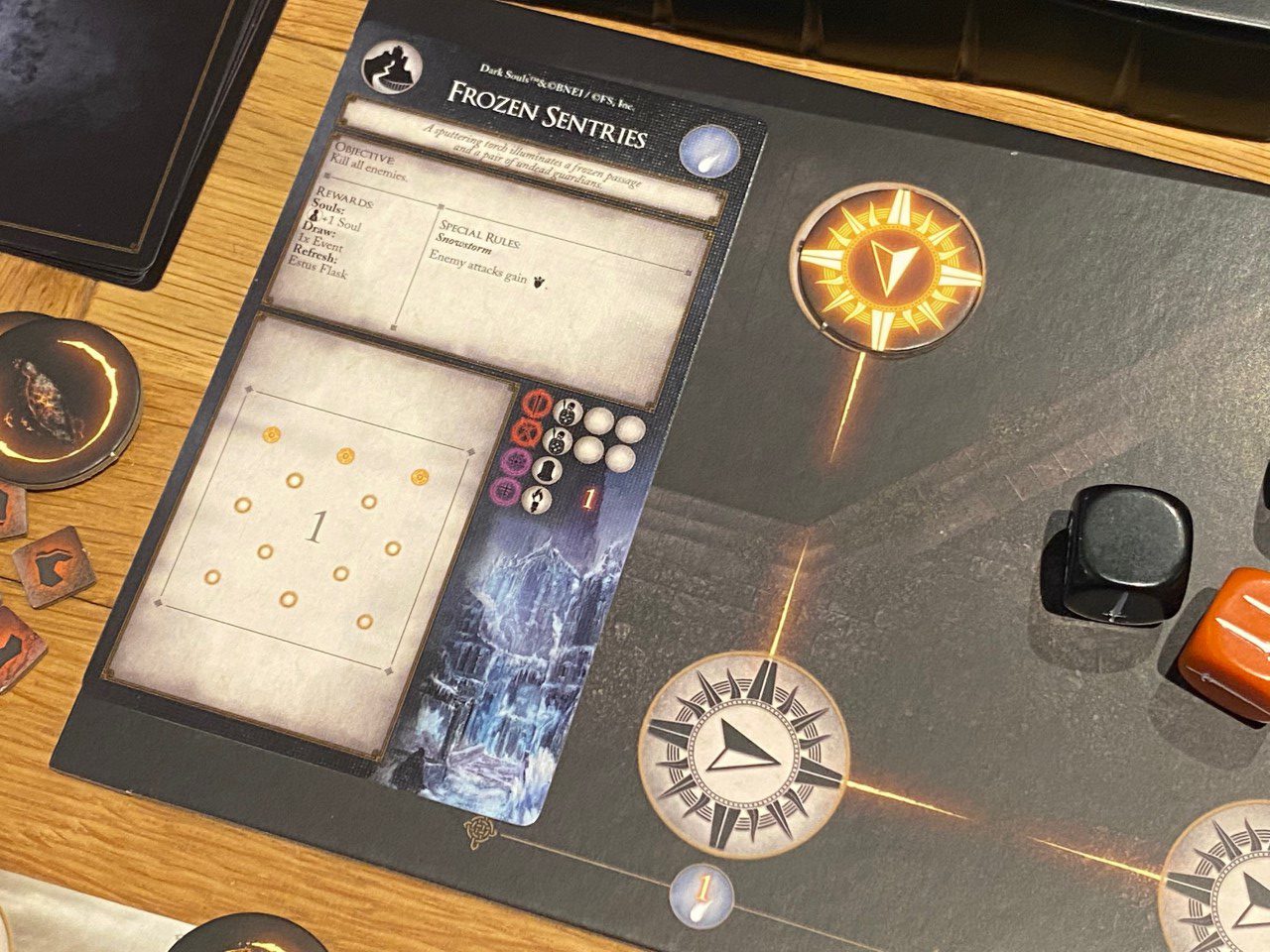
Elsewhere, there are certainly rules changes and tweaks to balance that will please returning fans. I couldn’t possibly list all of these since my recollection of the original game is limited at best, but a few things of note include: rebalancing of stamina use when wielding two-handed weapons, more generous access to items in stages, the ability to both dodge and block damage (meaning you dodge first, but if you are hit, your armour still counts) and similar.
The overall effect of a lot of these changes is that the early game is a little easier, but Dark Souls: The Board Game still ramps up to the level of difficulty that we’ve come to expect from the series. This is helped in part by the fact that the later encounter cards are specifically setup to be more difficult than the early ones, so retrying easier, early encounters to harvest souls is very much a viable strategy, and you will definitely need to reach a certain power level before taking on the level three encounters or either of the bosses.
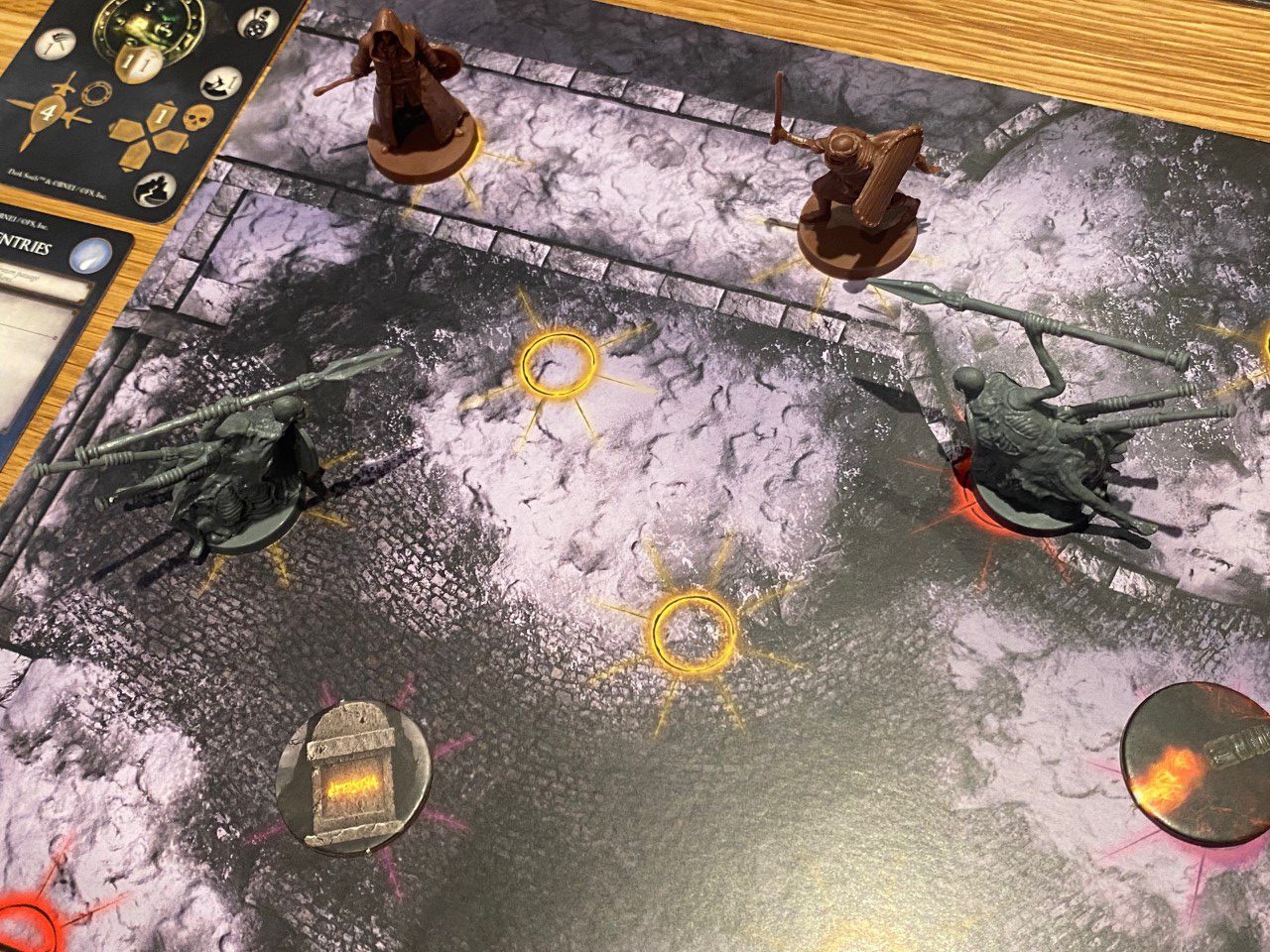
Moving on to the two new core sets, and we have two to choose from: Tomb of Giants and The Painted World of Ariamis. Both of these regions should be familiar to fans of the video game, and the content between the two core sets is completely unique. The three playable characters in each are different from one core box to the next, and so are the standard enemies and the two bosses. All tiles share the same basic layout, but the artwork between core sets is completely unique. Some tokens and items are shared between the sets, but there are also unique items within the decks that differentiate as well.
If we start with The Painted World of Ariamis, let’s take a look at what is in the box. Firstly, you get three characters (the Mercenary, the Sorcerer and the Deprived) which have all previously been released in a character expansion, but were not included in the original base game. I guess this is a good “happy medium” between adding valid, brand new content for someone who only owns the base game and a sad reality for those who have already invested in a complete collection of Dark Souls: The Board Game — because those people will now have duplicate characters. You can’t win them all!
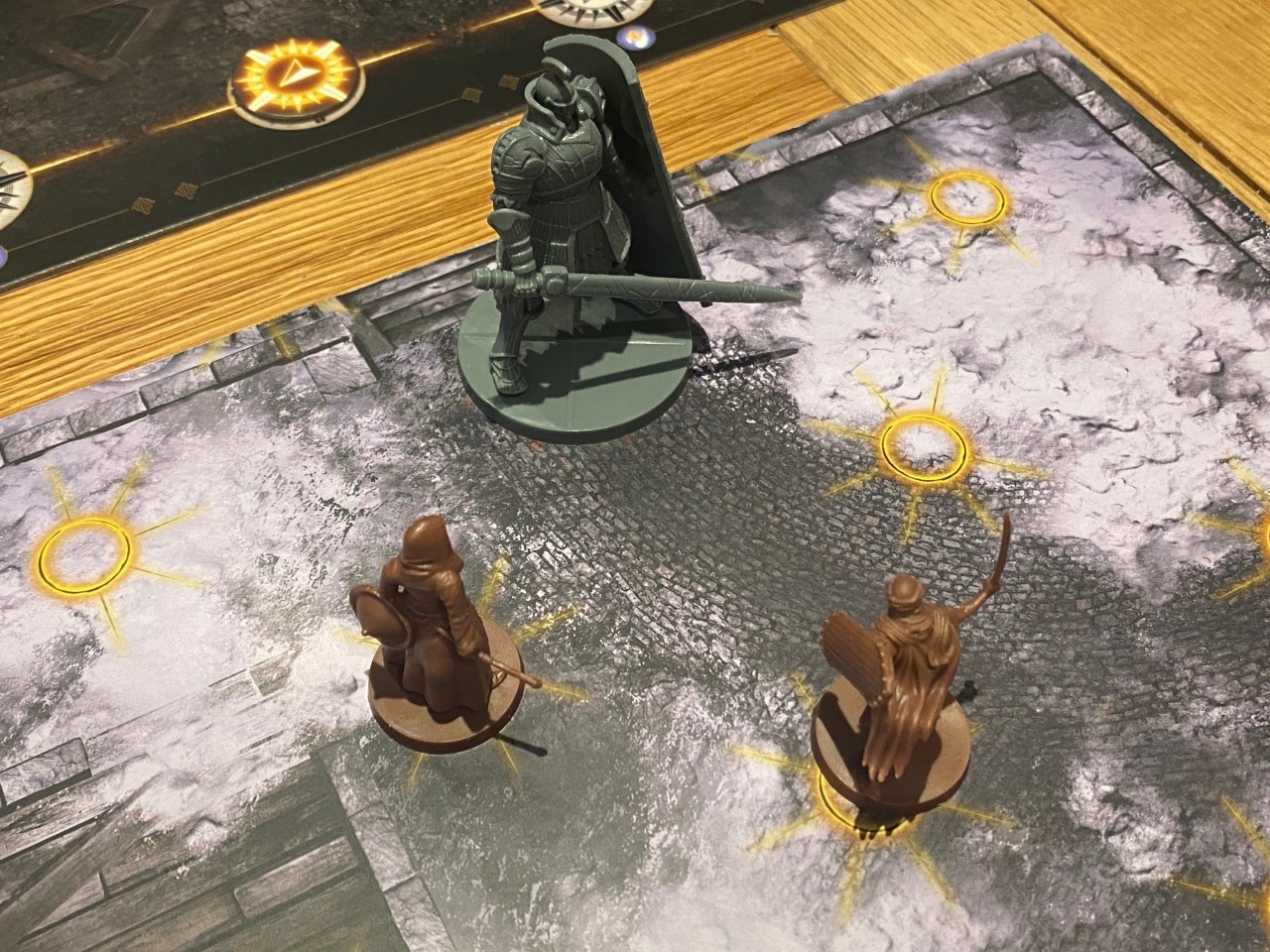
Next, you’ll get a load of really interesting enemy characters to fight. In The Painted World of Ariamis, you’ll find quite a broad range of interesting effects that make it a little more complex than Tomb of Giants. There are rats that cause poison, Bonewheel Skeletons that push players around and Crow Demons that leap in for massive damage. Skeleton Phalanx’s come in both a basic and upgraded form, and can prove extremely tough and able to damage multiple players at the same time.
In terms of bosses, the Heavy Knight is the featured mini-boss and he is a relatively simple and highly effective foe. His toughness, ability to heal himself, stagger and endurance draining attacks and general damage output make him a very tough foe. He’s not as bad as the main boss, Priscilla, however, who begins the encounter invisible and regains it whenever her deck is reshuffled. She causes conditions like bleed and frostbite and causes loads of both magic and physical damage — potentially even killing a player character in a single massive blow. Both of these guys offer a really fun fight that will definitely challenge even experienced players to the limit.
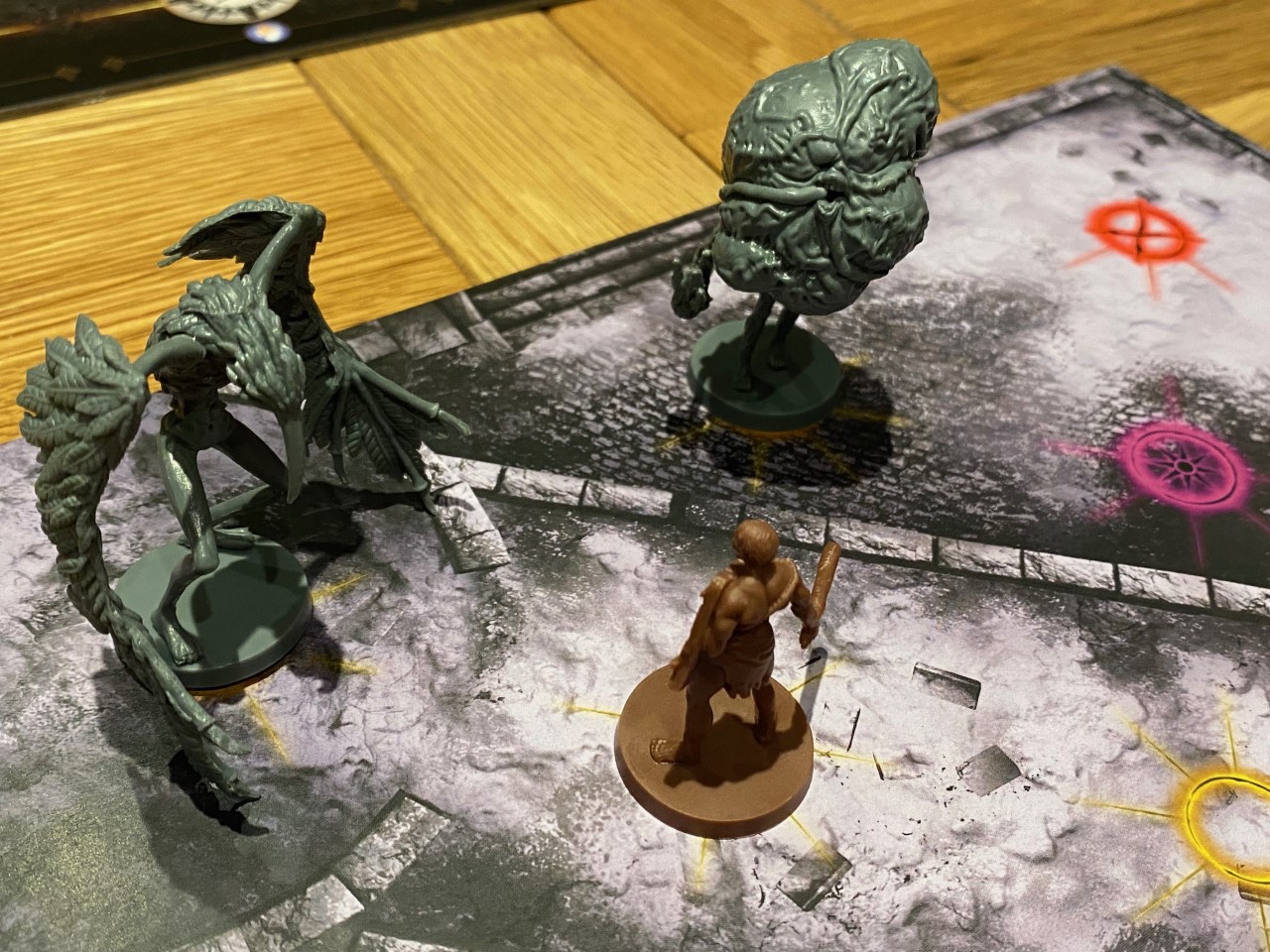
Moving on to Tomb of Giants now, and the playable characters include the Thief, the Cleric and the Pyromancer, which again have appeared before in the character expansion. Personally, I prefer this combination of three however, because there’s a versatile fighter, a fighter who can also heal and a strong magic user.
There are six brand new enemies in Tomb of Giants, and these include skeleton archers and soldiers, giant skeleton archers and soldiers, the skeleton beast and the necromancer. These enemies do a good mix of ranged and physical attacks to the player, but the only magic user is the necromancer (who both attacks with magic and often spawns more skeletons) and I felt that there was less complexity to deal with here than there is in The Painted World of Ariamis. As an aside, this is also true of the encounter complexity as well, since Tomb of Giants doesn’t have the same poison clouds or frostbite effects that feature in Ariamis.

Where the two bosses in Tomb of Giants are concerned, Steamforged Games once again come up trumps. The Black Knight is the sub-boss this time, bringing with him a range of attacks that can push characters away and/or stagger them, and several moves that involve him ending his turn with his back (which is a weak spot) pressed back into a corner. The main-boss in this set is Gravelord Nito — who is represented by one of the most detailed and impressive models we’ve seen in the series so far.
Nito is a really tough opponent who can recall his dead allies if the players have been successful in defeating them. He also does a lot of area of effect damage, often hitting all the players around him or on a specific space. He also pushes with several of his attacks and poisons players with about half of them, and when combined, these things together make him a really tough cookie.

Of course, where both Tomb of Giants and The Painted World of Ariamis are concerned, none of the content would matter if the game didn’t have that now legendary Dark Souls feel — and this is something that both sets really nail. Putting the history of Dark Souls: The Board Game behind me entirely and just focussing on these new core sets, I was completely immersed in the experience in much the same way as I was when playing the videogame.
Encounters feel tense and there’s an awareness around the table that any enemy could be the one that kills you. Embers are limited based on the number of players, and one is burned out with each death — making completing a campaign run really challenging. Cautious players will want to revisit areas that have already been cleared, whilst others will want to skip ahead. Souls can be spent on upgrades to basic stats that unlock new and often powerful weapons for use — and these can really turn the tide of battle.
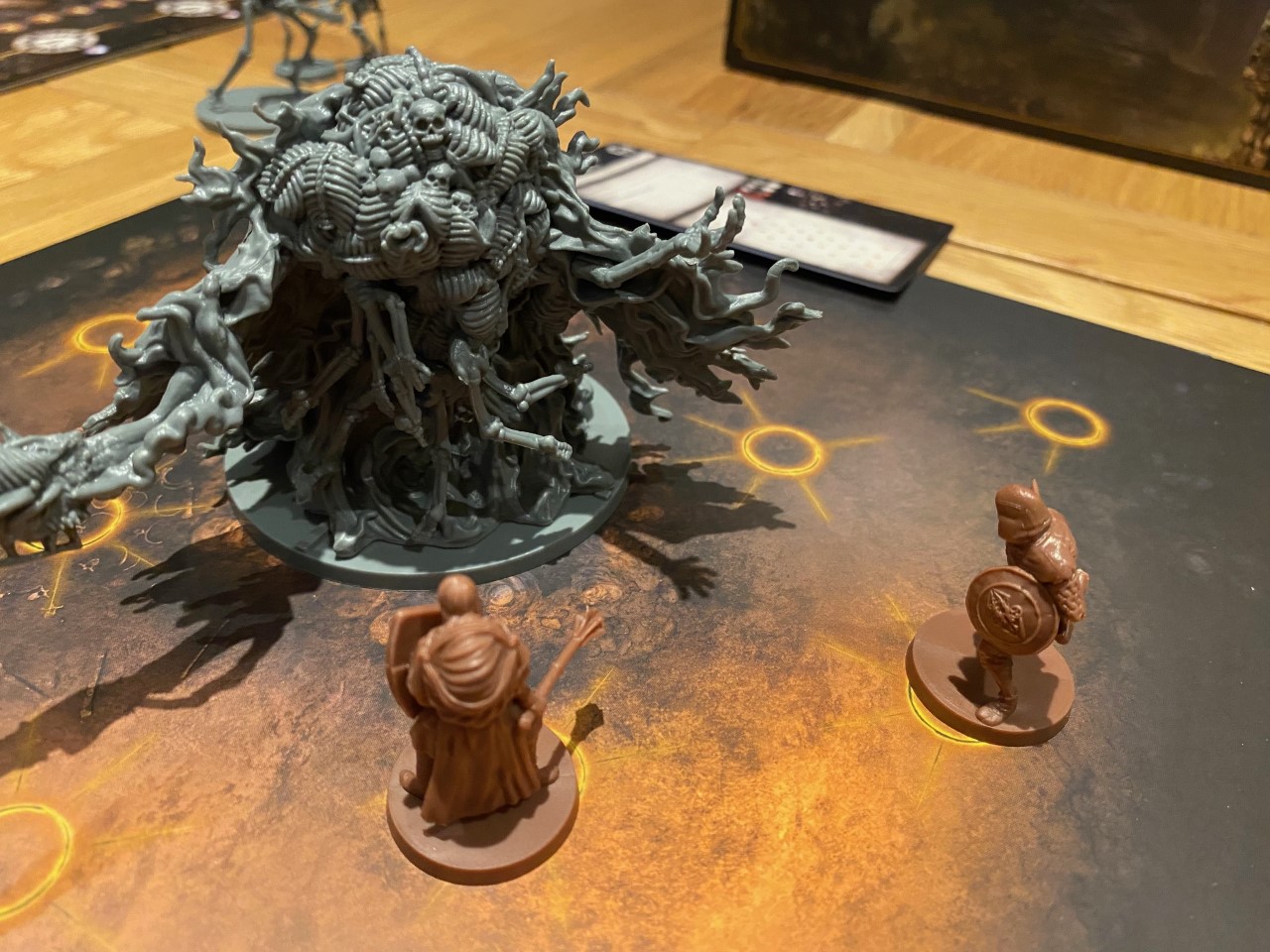
Combat is determined by dice, but there are ways to enable re-rolls and buffs that help to minimise completely luck-based outcomes, and the change to defending that I mentioned earlier (both dodge and block dice being used, rather than just one or the other) helps the game to feel a lot more reasonable and reminiscent of the videogame — you may have built a character to dodge, but your basic leather armour might still save the day from time to time.
With several years of refinement and a load of experienced developers on the team, Steamforged Games have absolutely nailed the feel and theme of Dark Souls with the Tomb of Giants and The Painted World of Ariamis core sets. As someone who never loved the original version but could see potential, I now feel completely converted — Dark Souls: The Board Game is now an experience that lives up to and in many ways surpasses the enjoyment offered by the videogame.
Dark Souls: The Board Game is available on Amazon.
Love both video games and board games? Here’s our list of some fantastic crossover games.
Comments are closed.